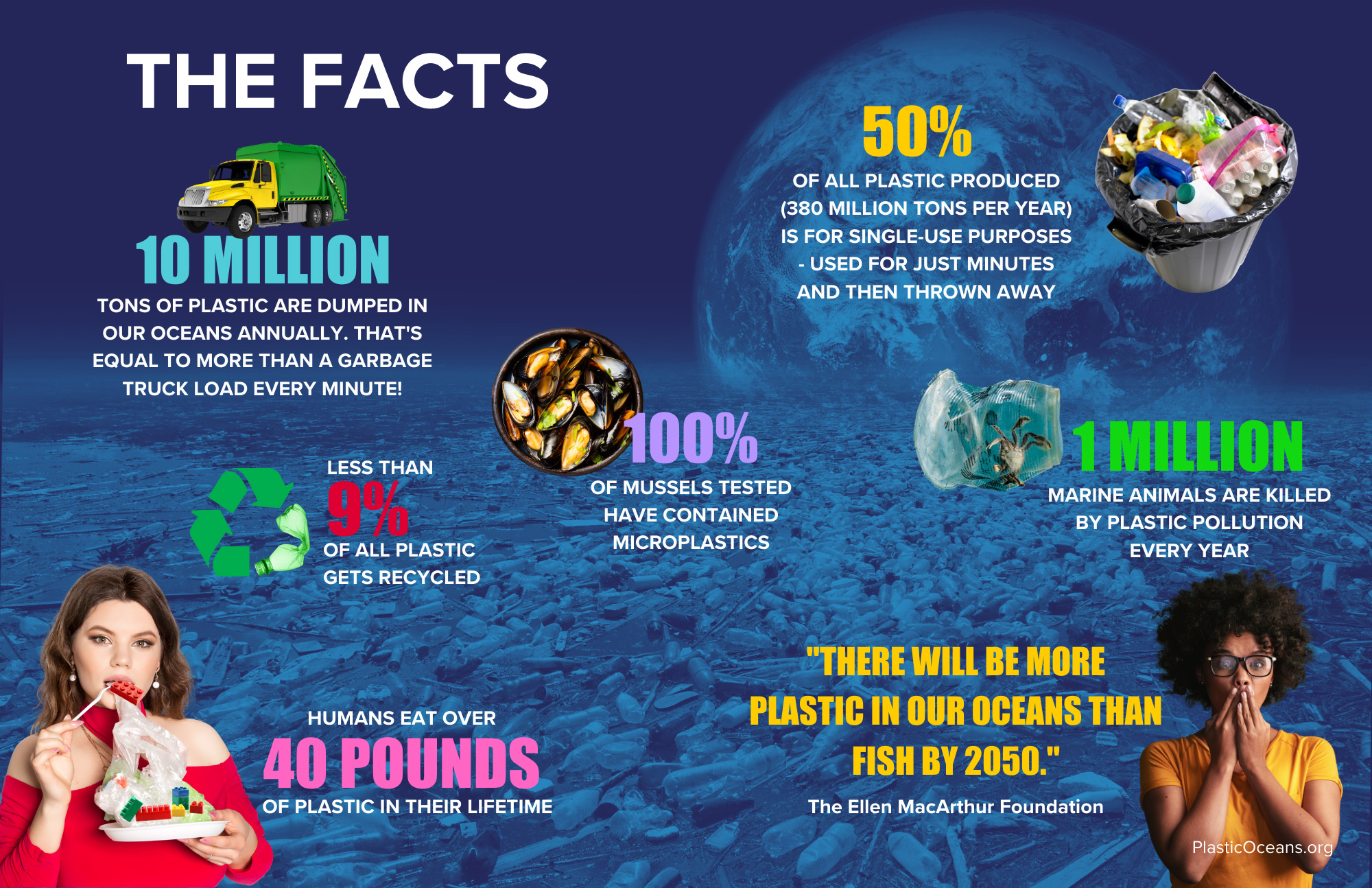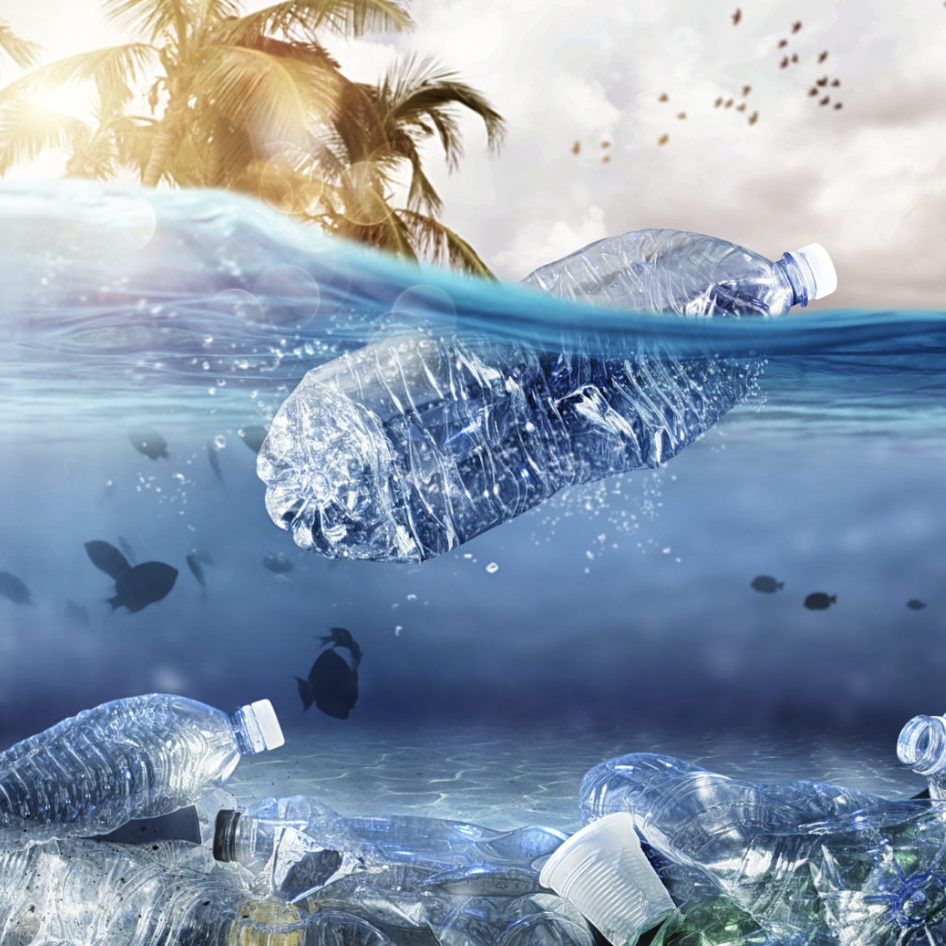Antwort Is 40% of the ocean plastic? Weitere Antworten – What percent of the ocean has plastic
A Global Tragedy for Our Oceans and Sea Life
Plastic accumulating in our oceans and on our beaches has become a global crisis. Billions of pounds of plastic can be found in swirling convergences that make up about 40 percent of the world's ocean surfaces.Roughly 8 million tons of plastic is dumped into the world's oceans every year, and according to a new study, the majority of this waste comes from just five countries: China, Indonesia, the Philippines, Thailand and Vietnam.And about that elusive "missing" plastic Our journey through various research findings suggests it's a mix of hiding in plain sight on our coastlines, sinking to the ocean floor, embedding in sediments, and being swallowed by marine life.
Where does 90% of the plastic in the ocean come from : 10 rivers
Plastic gets into the ocean in many ways. It is dumped directly or is blown in by the wind. It comes from ships and lost fishing gear.
What percentage of ocean is polluted
Hey , A study recently published in the Proceedings of the National Academy of Sciences (PNAS) found that at least 88 percent of the Earth's ocean surface is polluted with plastic debris.
How bad is plastic pollution : Unlike other materials, plastic does not biodegrade. It can take up to 1,000 years to break down, so when it is discarded, it builds up in the environment until it reaches a crisis point. This pollution chokes marine wildlife, damages soil and poisons groundwater, and can cause serious health impacts.
Not taking action by the middle of the century may result in extinctions, the rapid spread of invasive species (often bringing new diseases), plastic pollution on a vast scale, crashing fish populations and disappearing forests, experts from every continent have warned.
There are increasing high levels of man-made pollution in many of the world's seas and little actually disappears. By 2050 there will be more plastic than fish in the world's oceans. We live on a blue planet; the world's oceans cover three quarters of the Earth.
Is plastic killing the ocean
In the ocean, plastic debris injures and kills fish, seabirds and marine mammals. Marine plastic pollution has impacted at least 267 species worldwide, including 86% of all sea turtle species, 44% of all seabird species and 43% of all marine mammal species.Plastic on the ocean's surface can trap sunlight, making the surface warmer and reducing the amount of light and heat traveling to the depths of the ocean. If plastic litter were to cover the ocean's surface, it can have ripple effects on marine ecosystems and affect the planet's climate system, the scientists warn.The 10 rivers that carry 93 percent of that trash are the Yangtze, Yellow, Hai, Pearl, Amur, Mekong, Indus and Ganges Delta in Asia, and the Niger and Nile in Africa.
Plastic pollution
What are the most common sources of ocean pollution
| Rank | Source |
|---|---|
| 1 | Plastic pollution |
| 2 | Nutrient pollution |
| 3 | Non-point source pollution |
| 4 | Light pollution |
What is the cleanest ocean : The far South Pacific and far South Atlantic are believed to be the cleanest. The primary type of pollution in the oceans is plastics. The far southern oceans are somewhat isolated from the primary sources of pollutants due to both distance and the circumpolar antarctic current.
What percentage of pollution is plastic : Plastic production and disposal emits around 3% of global emissions. The most visible environmental impact of plastic is the waste that ends up in our rivers and oceans. Another concern is its contribution to climate change.
Is plastic the number 1 cause of pollution
Plastic waste makes up 80% of all marine pollution and around 8 to 10 million metric tons of plastic end up in the ocean each year.
Plastic production will increase by 40% in the next 10 years. If we don't do anything about the plastic soup, oceans will carry more plastic than fish (by weight) by 2050. The United Nations warns that marine life will be irreparably destroyed.With world temperatures set to rise more over the next 50 years than they have in the previous 6,000, scientists agree that far worse is still to come. Today, just one percent of the planet falls within so-called “barely liveable” hot zones: by 2050, the ratio could rise to almost twenty percent.
What will the ocean look like in 50 years : The future ocean in 50 years will be bigger and much warmer. Thus meaning less animals will live in it. Animals from the equator will come up coast because it'll be warmer. Animals that live in cold water will have no place to go, so they will die.





